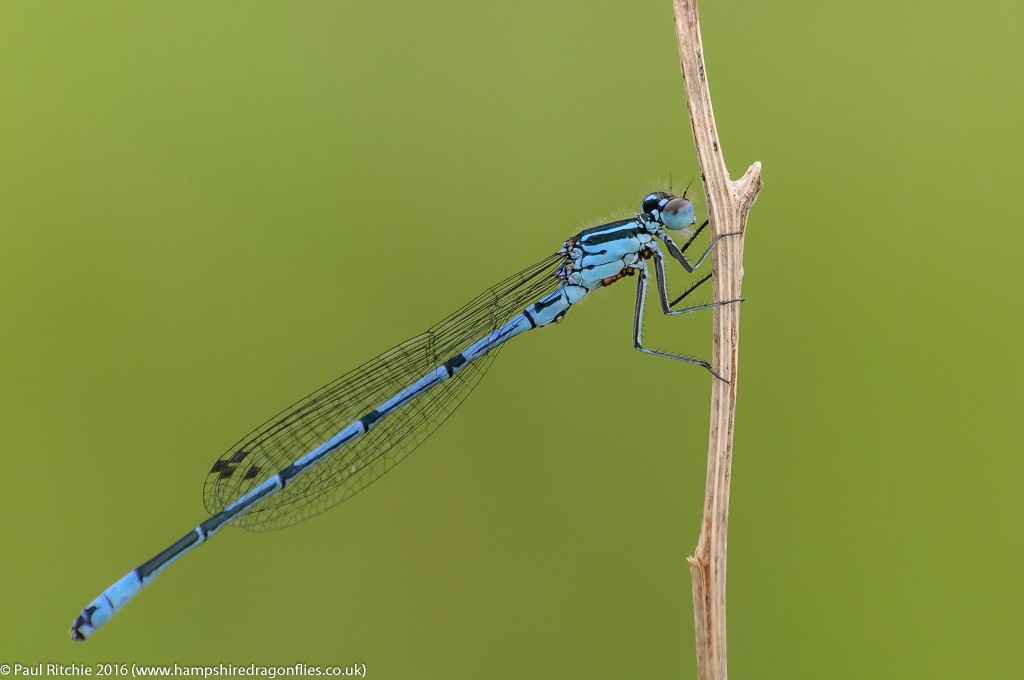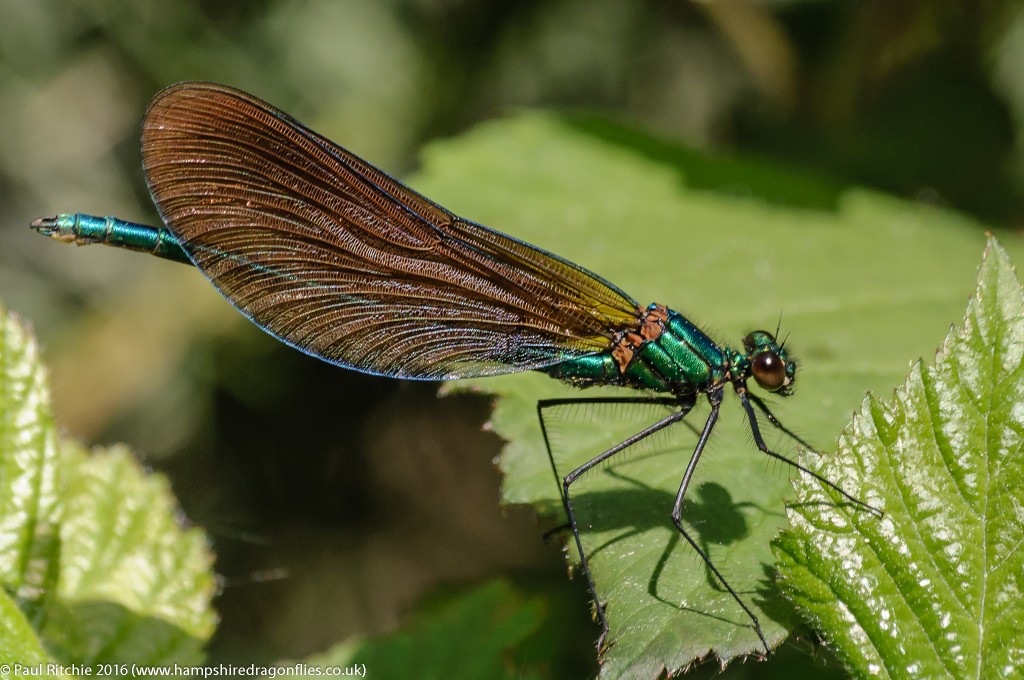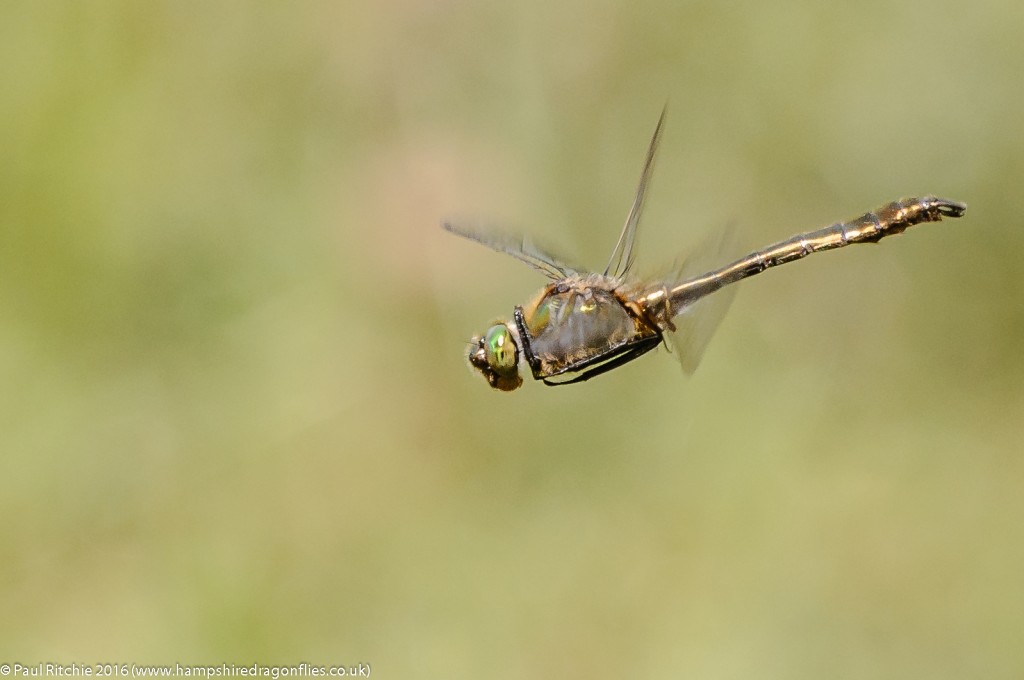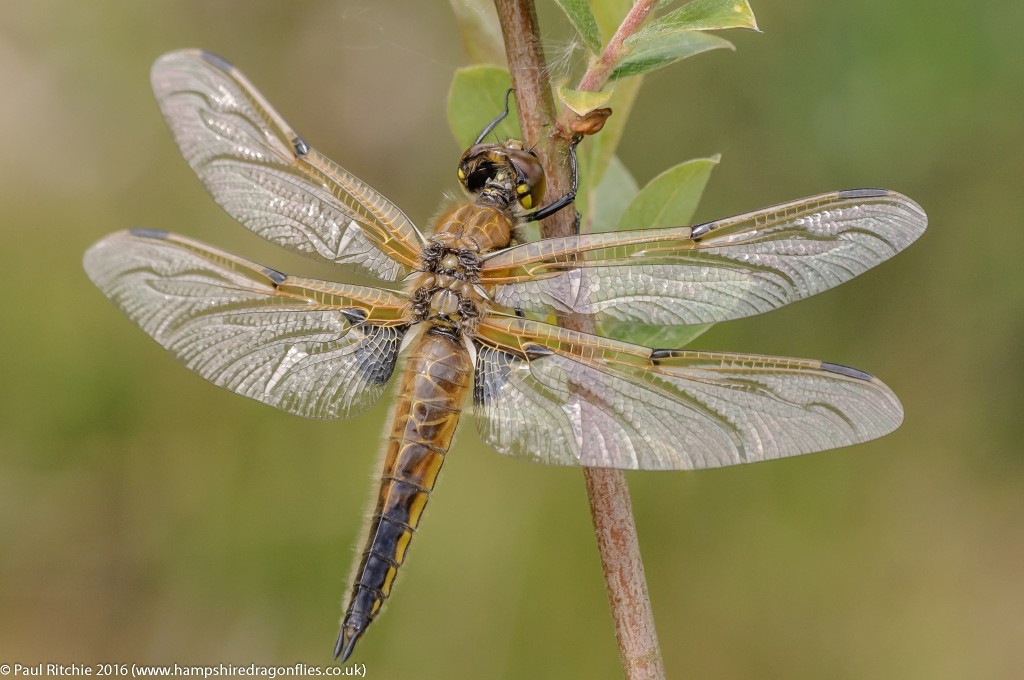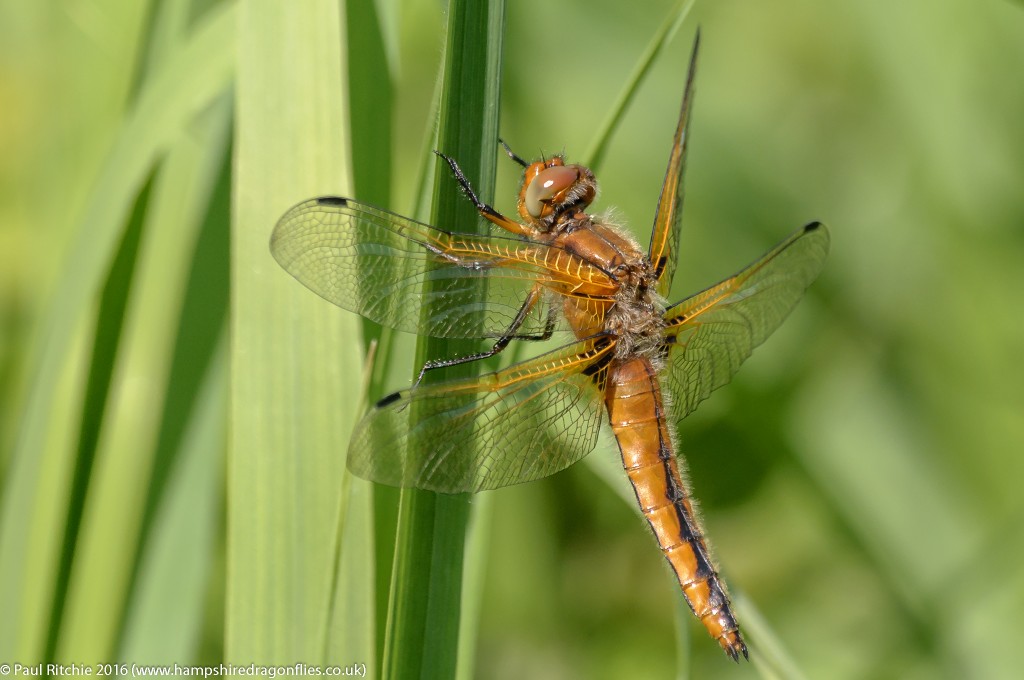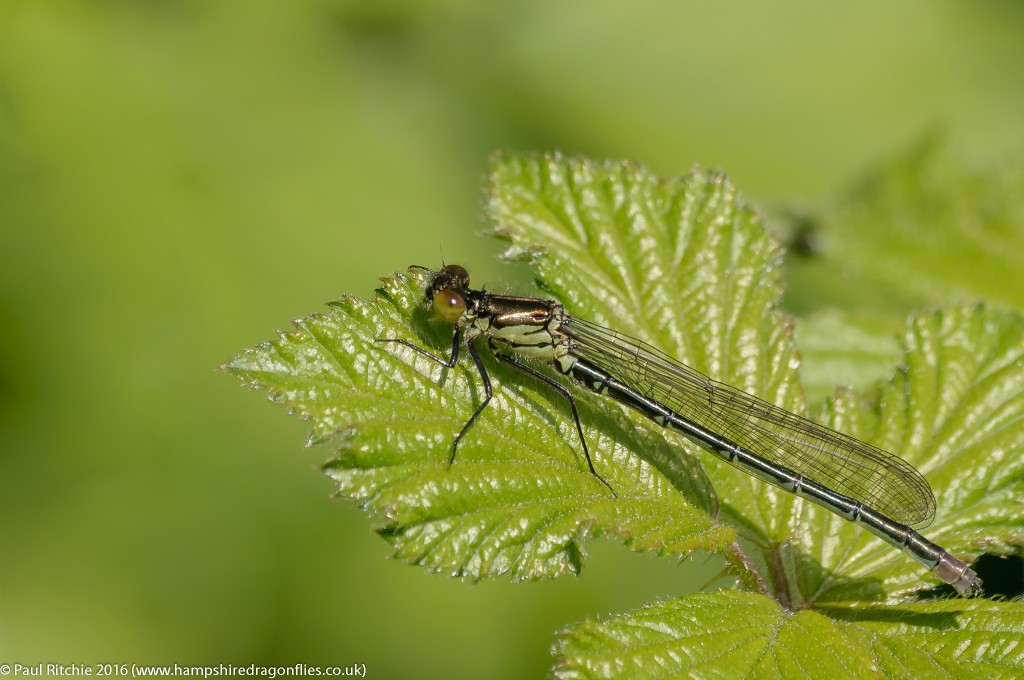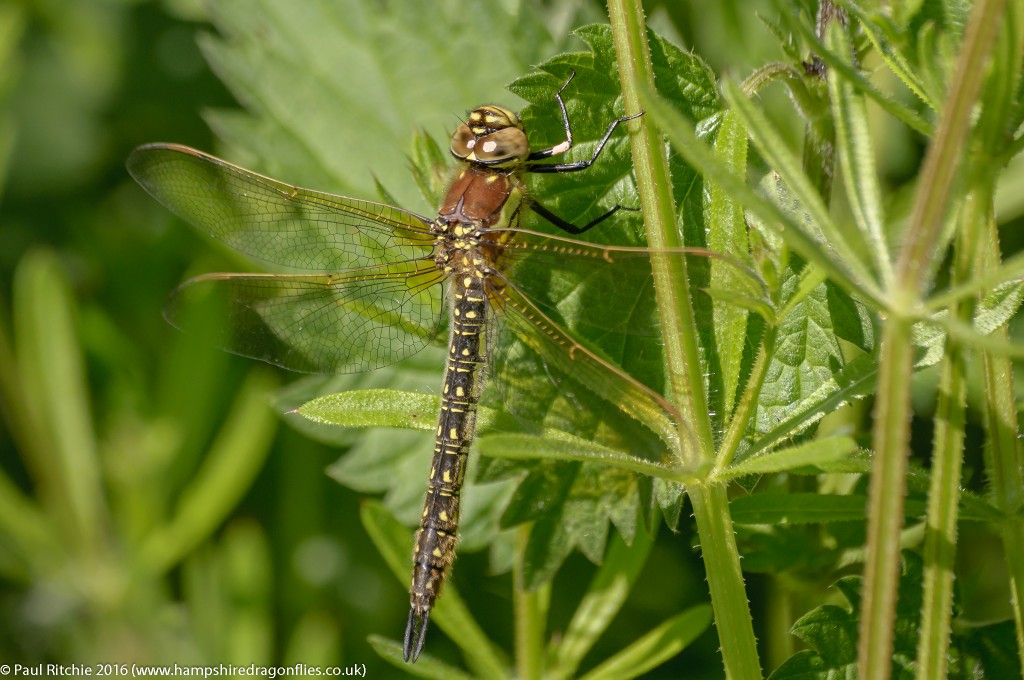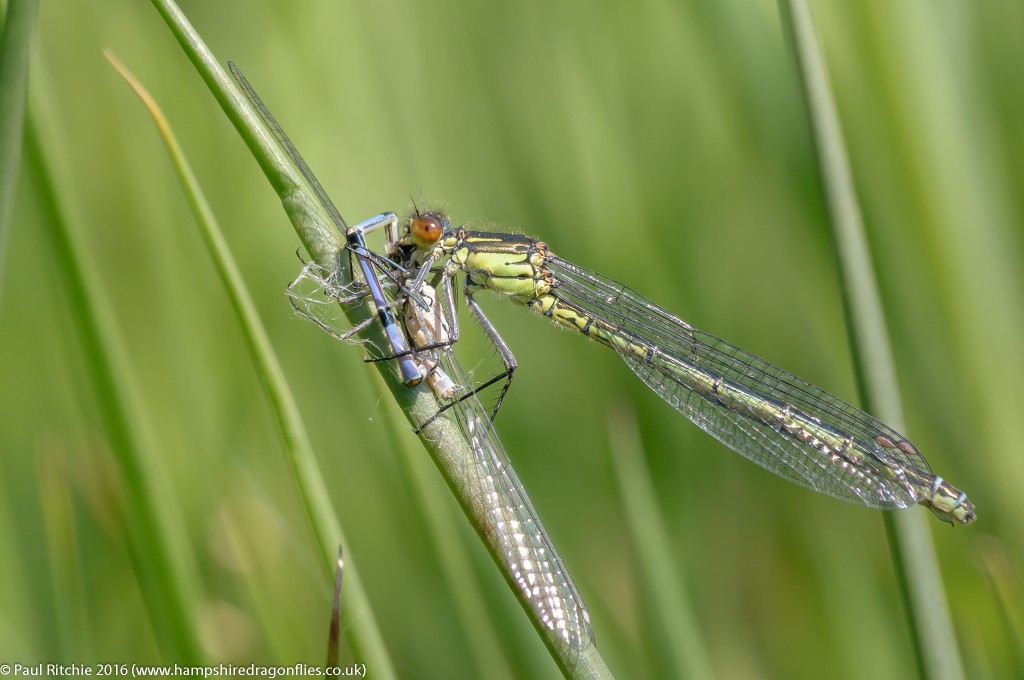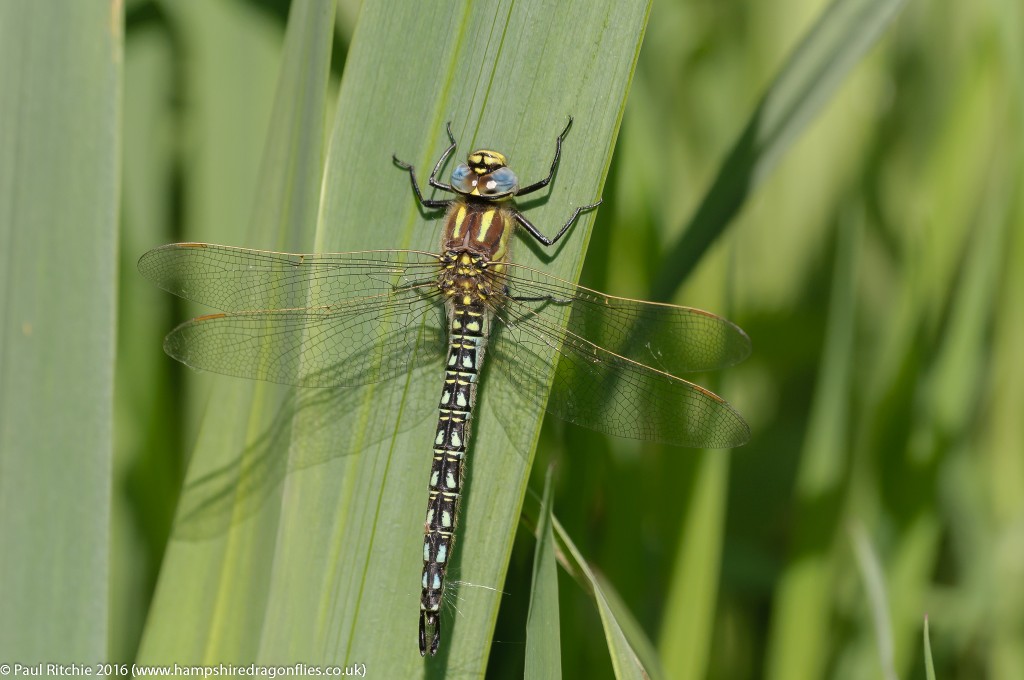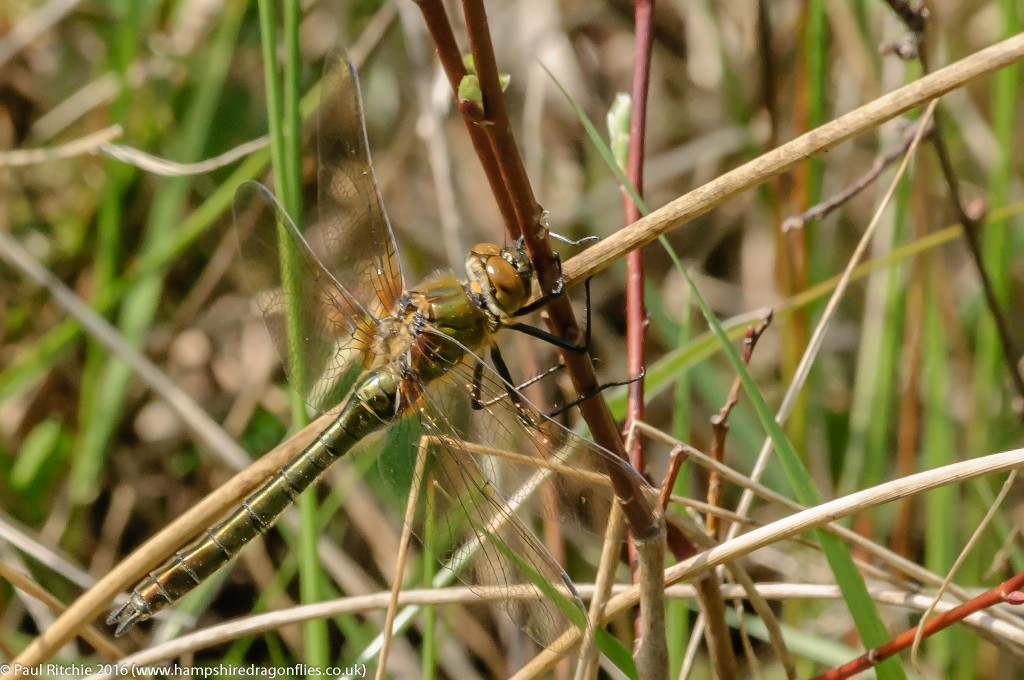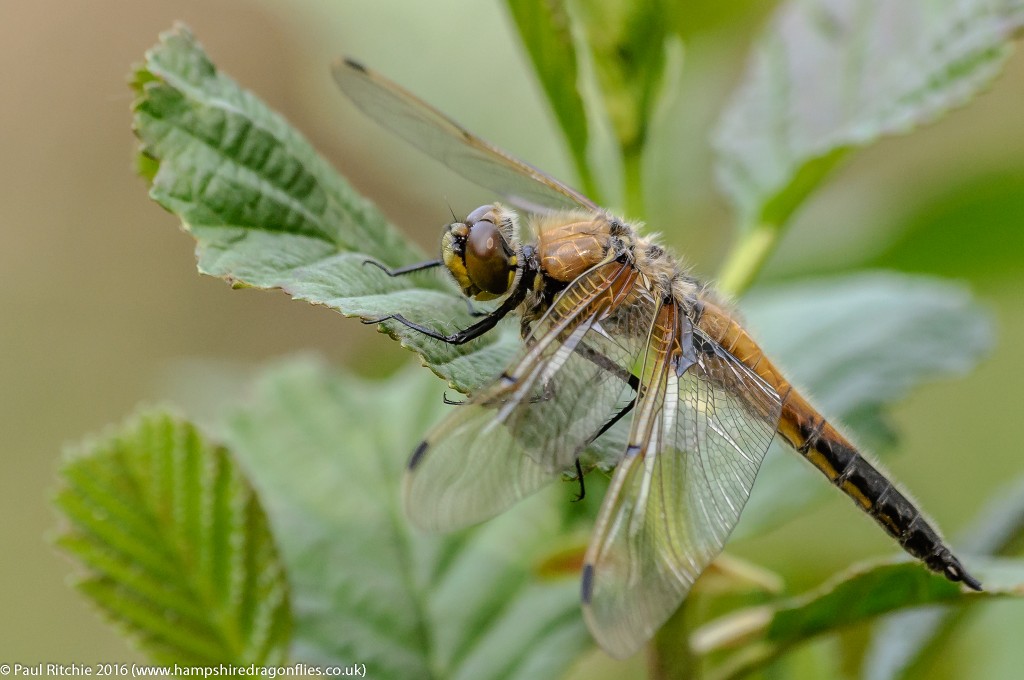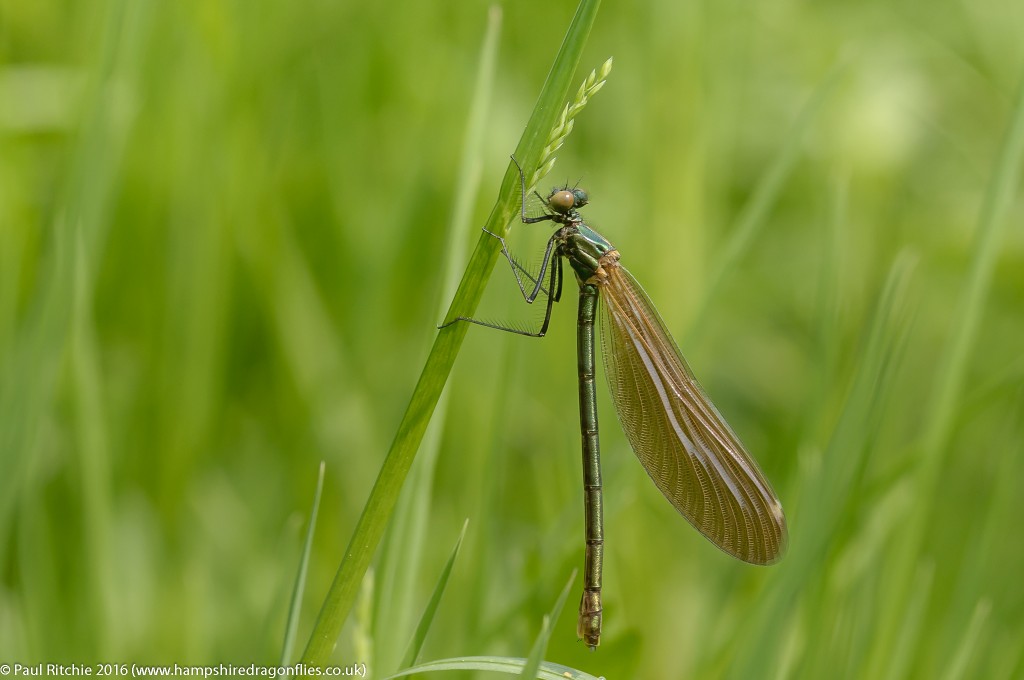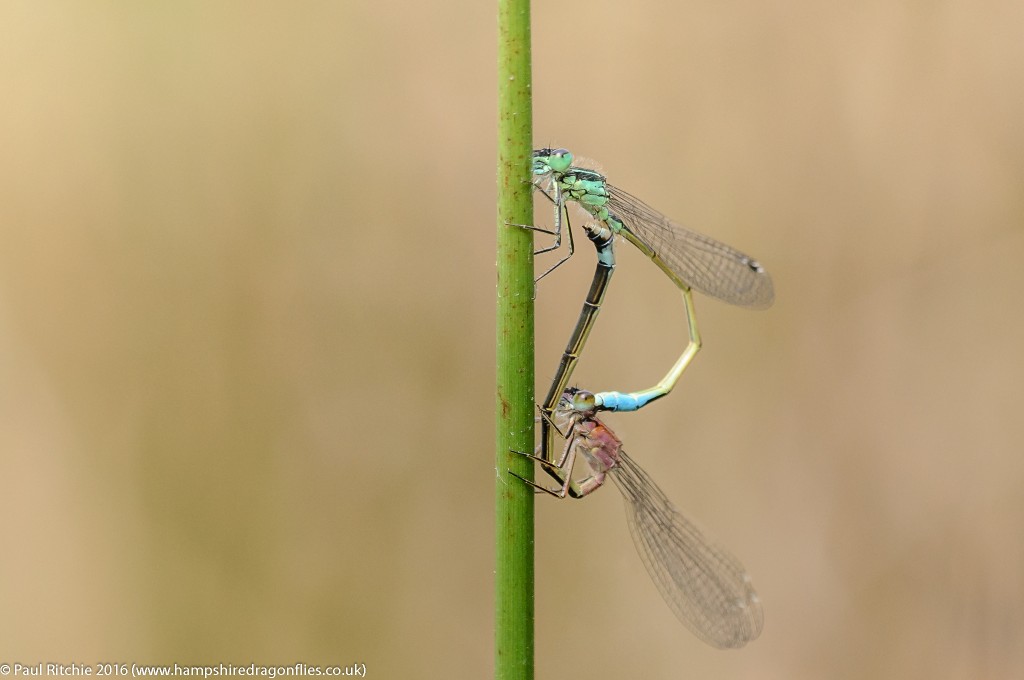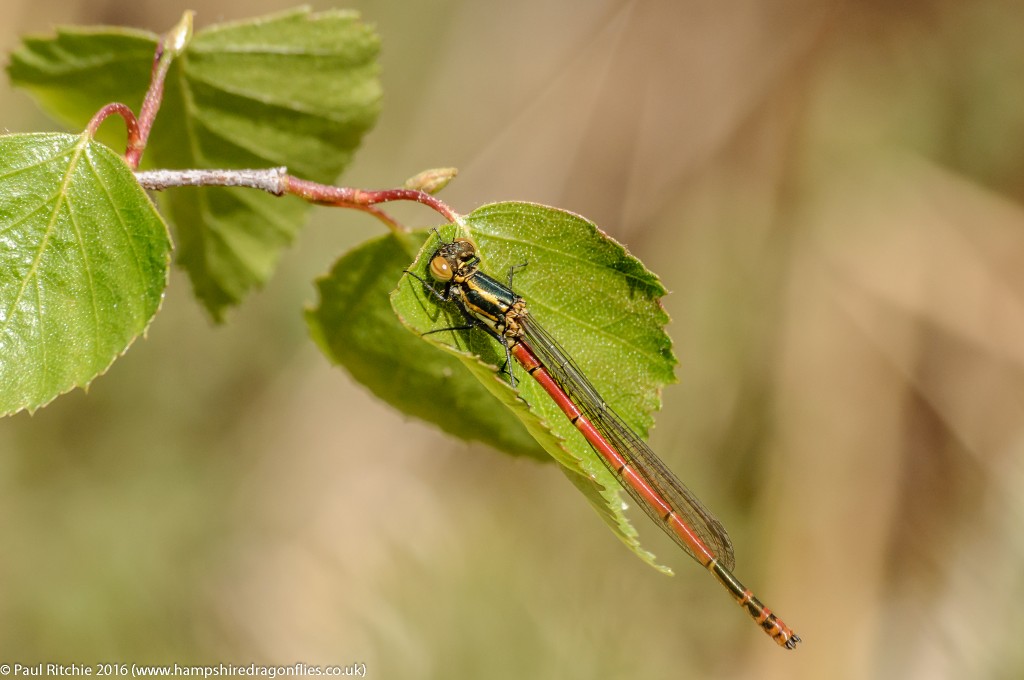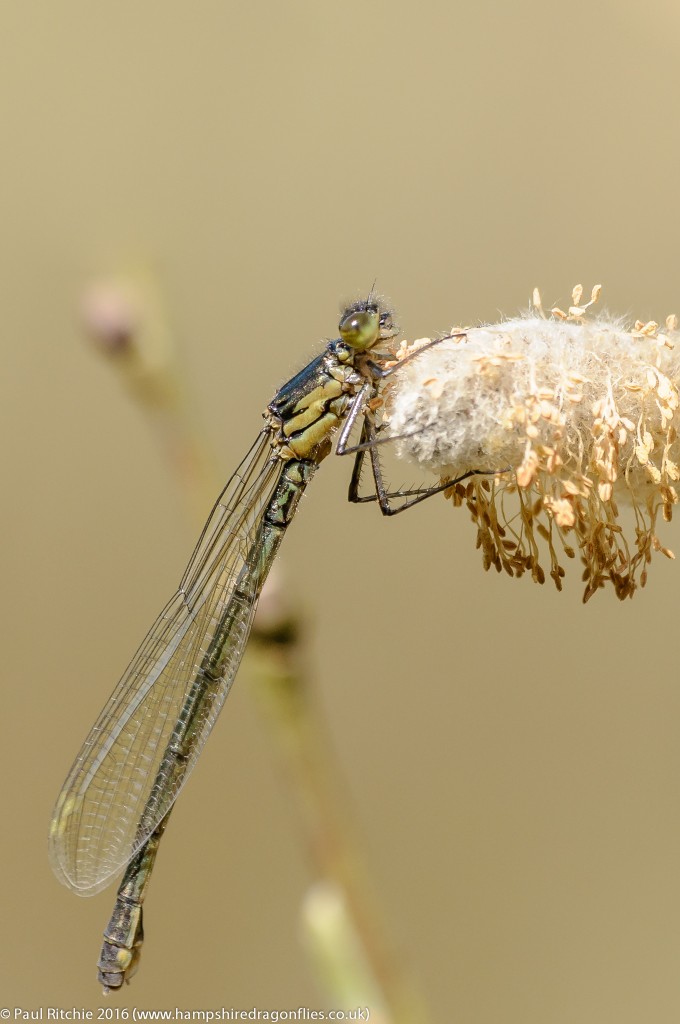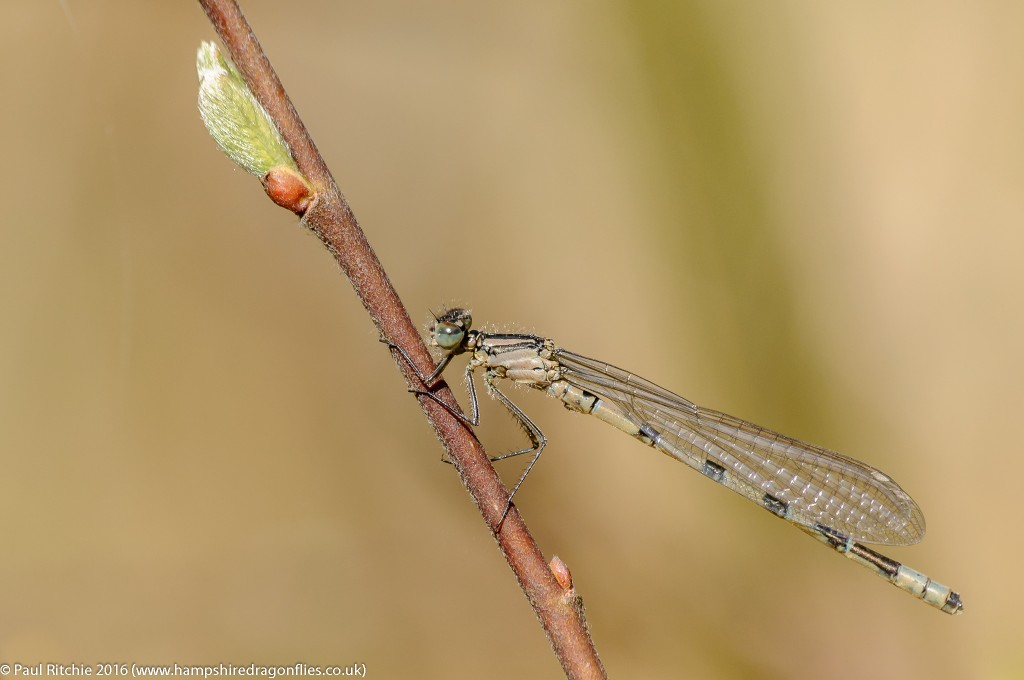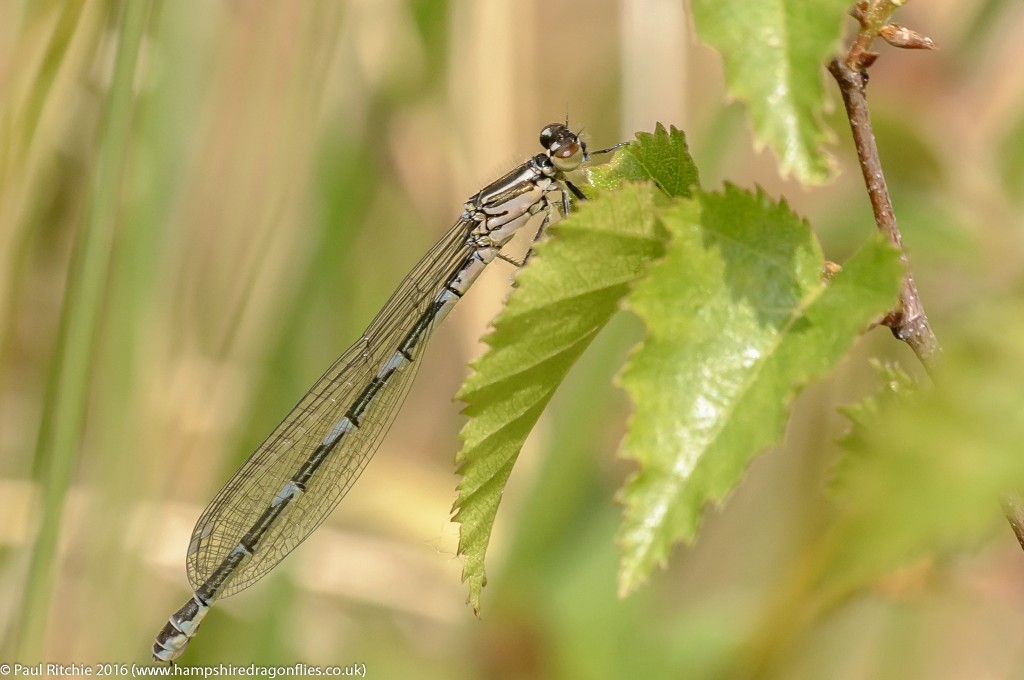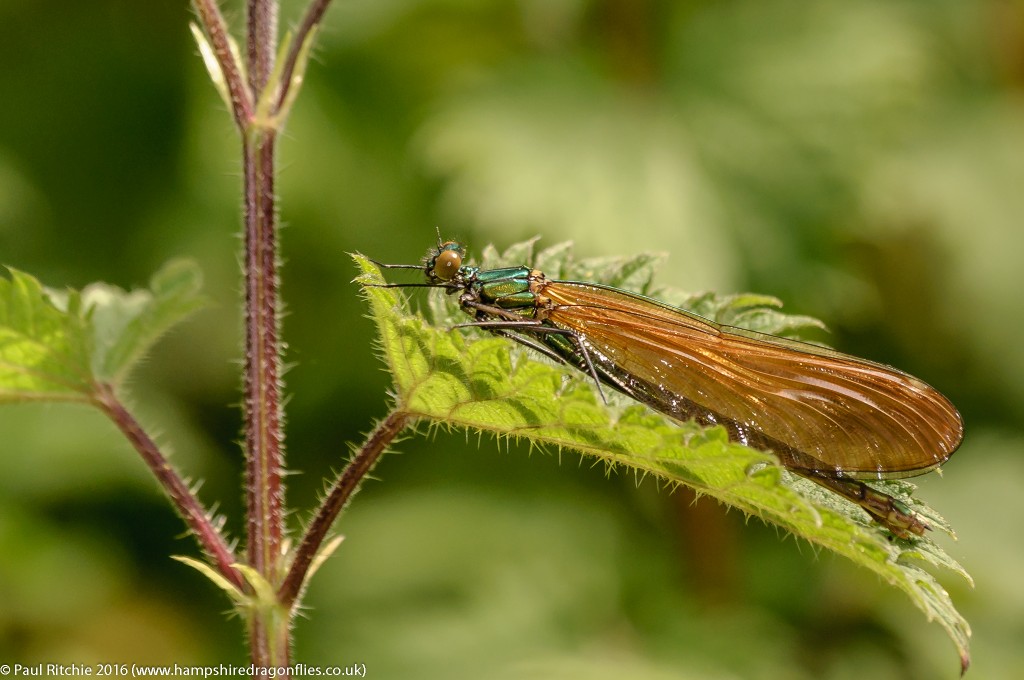The delayed spring has resulted in a flurry of May delights with several summer species joining the fray, although there still appears to be a subdued feel to most places as these young adults disappear to feed, mature and grow.
Thankfully one of my favourite spring sites always give me moments of pleasure. Troublefield was positively brimming with fresh Beautiful and Banded Demoiselles, and so long as you are up for the chase and patient they can provide some stunning photography opportunities.
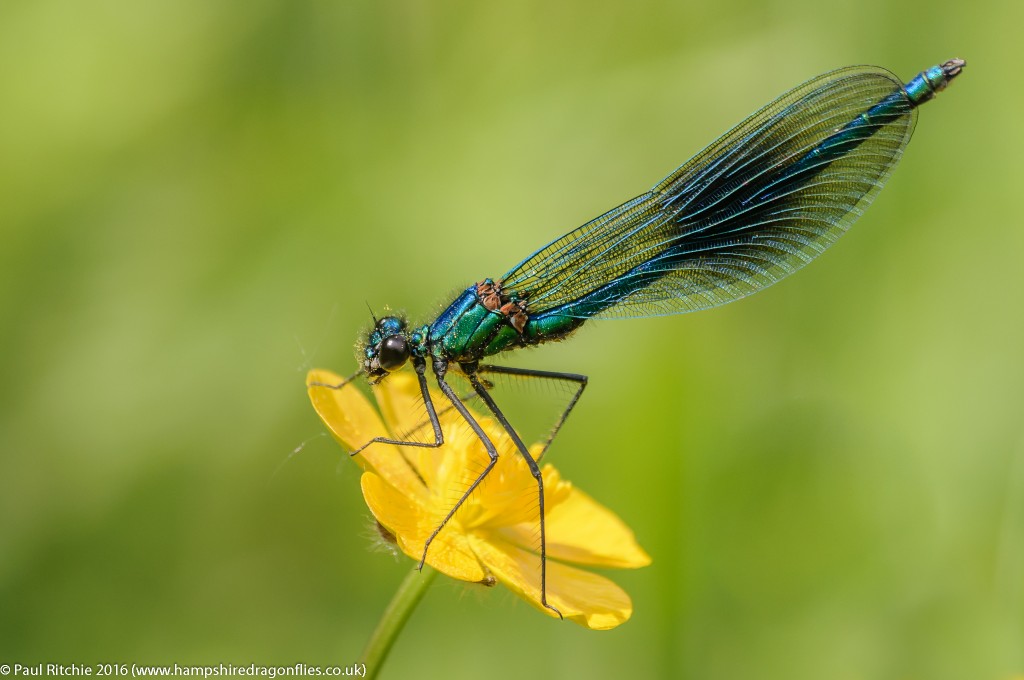
This pristine water meadow is rife with feeder insects and provides the perfect crèche for maturing adults. A pristine but flighty female Broad-bodied Chaser gave me the run around twice, helped by a Scarce Chaser drawing my attention away from her.
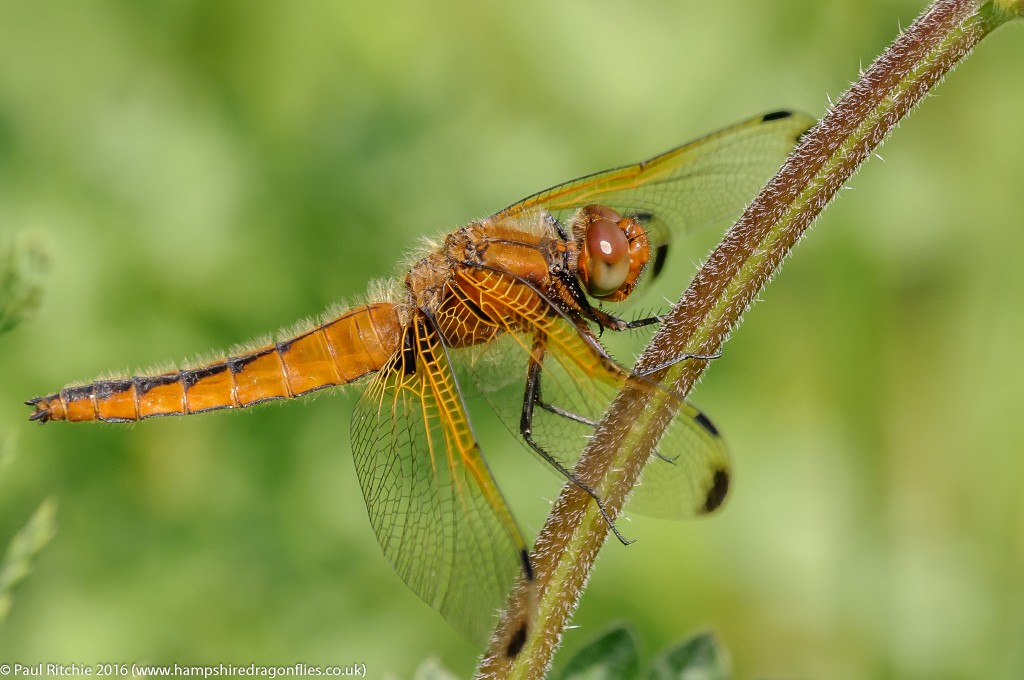
Every spring there’s always a pleasant surprise to be found at Troublefield; whether it be an early maturing Emperor, a visiting Hairy or a fresh and early Golden-ringed. This year it was the latter which made my morning.

Visiting Cadnam Common on the way back the pond activity isn’t yet as furious as you would expect in late May with only a few Chasers battling for supremacy and just the one male Downy patrolling. Still, at least it’s looking healthy and given a week or so should provide the splendid spectacle which first fired my interest.
On Friday afternoon Sue & I took a walk around Swanwick Nature Reserve in the hope we would find a willing Blue-tailed or two. We did find a small selection this time, although they were warm & flighty and seemed determined to make me work for it.
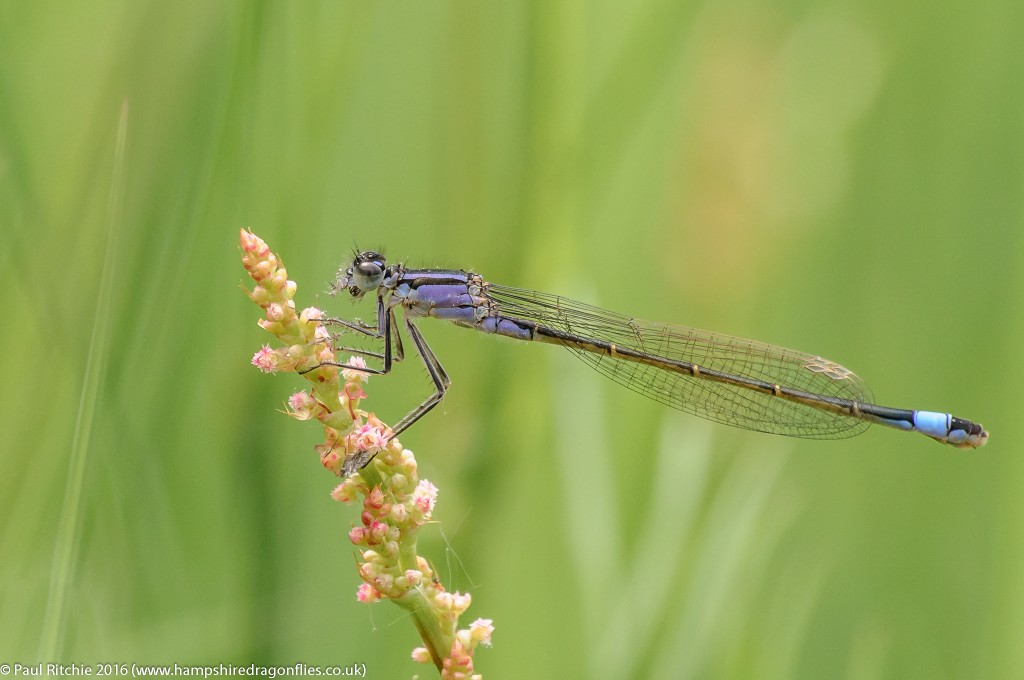
At the entrance to the meadows we were faced with signs and painted markers ordering visitors to remain on the paths and stay out of the meadows. There seems to be a misguided culture of turning our threatened wild flower meadows into museum artifacts by placing them behind fences and screens and preventing our enjoyment instead of educating us through interaction. Such rules and regulations will further prevent our love and enjoyment and eventually refer them to history.
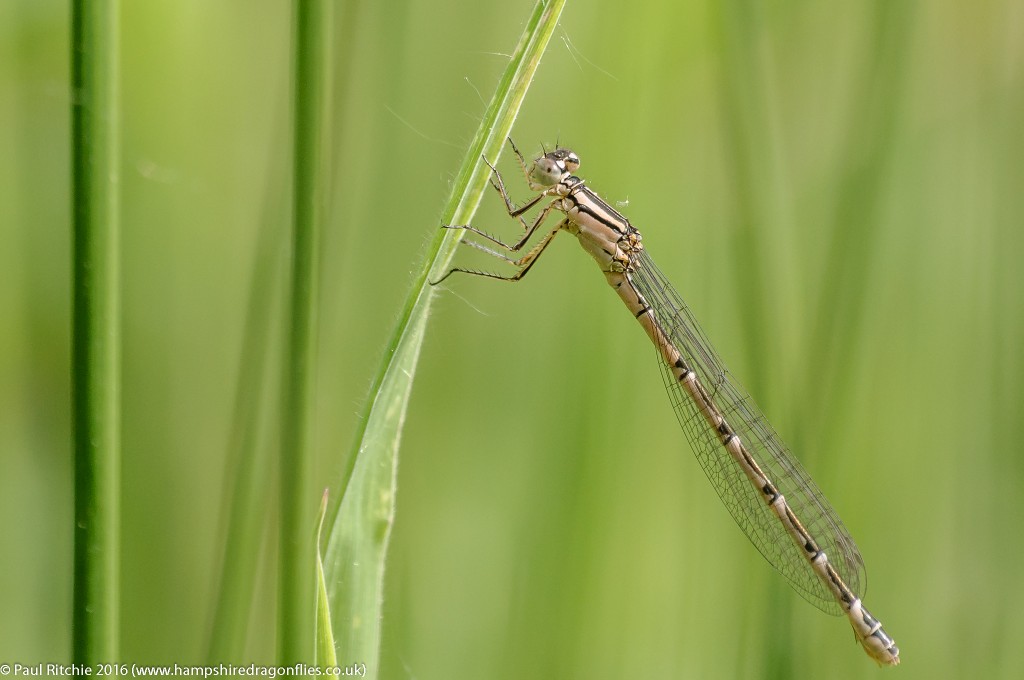
This being an urban Nature Reserve means it is used by dog walkers and these utilitarian methods are probably a result of irresponsible owners not keeping there charges on leads. They’re certainly to blame for the state of ‘dog pond’ at the far end of the reserve, although the Large Red and Broad-bodied Chasers seem to thrive in the filth.
On our visit there were a couple of males patrolling, a female ovipositing and two just-emerged females which flew into the canopy with our passing. So a little to see and a chance to take a local couple of hours exercise, but I do wish I would come away wanting to visit more frequently.

